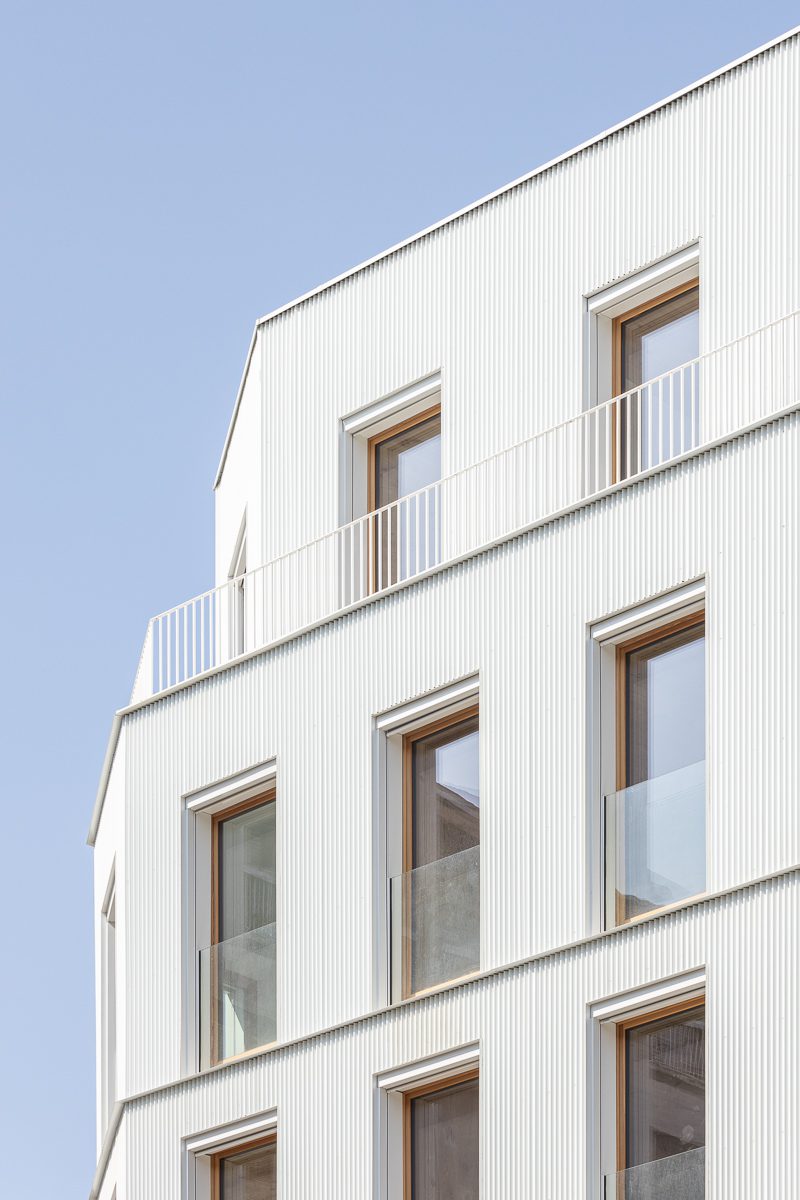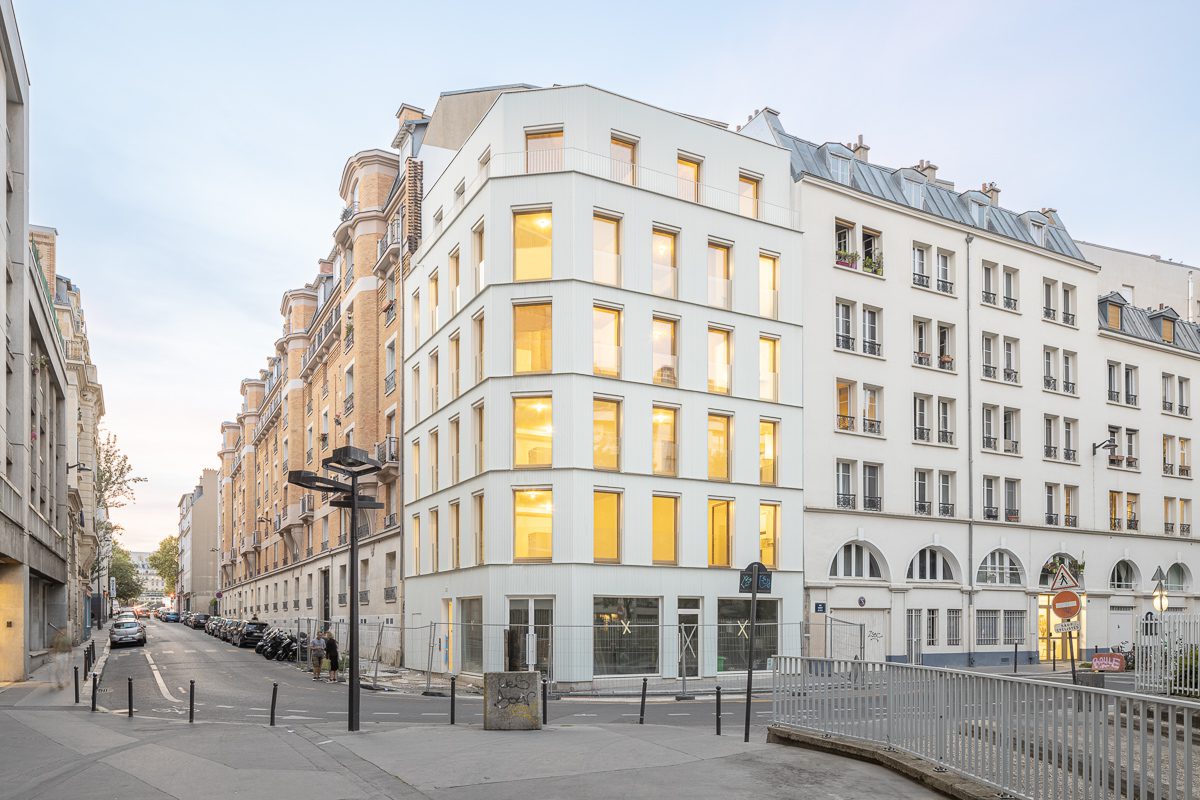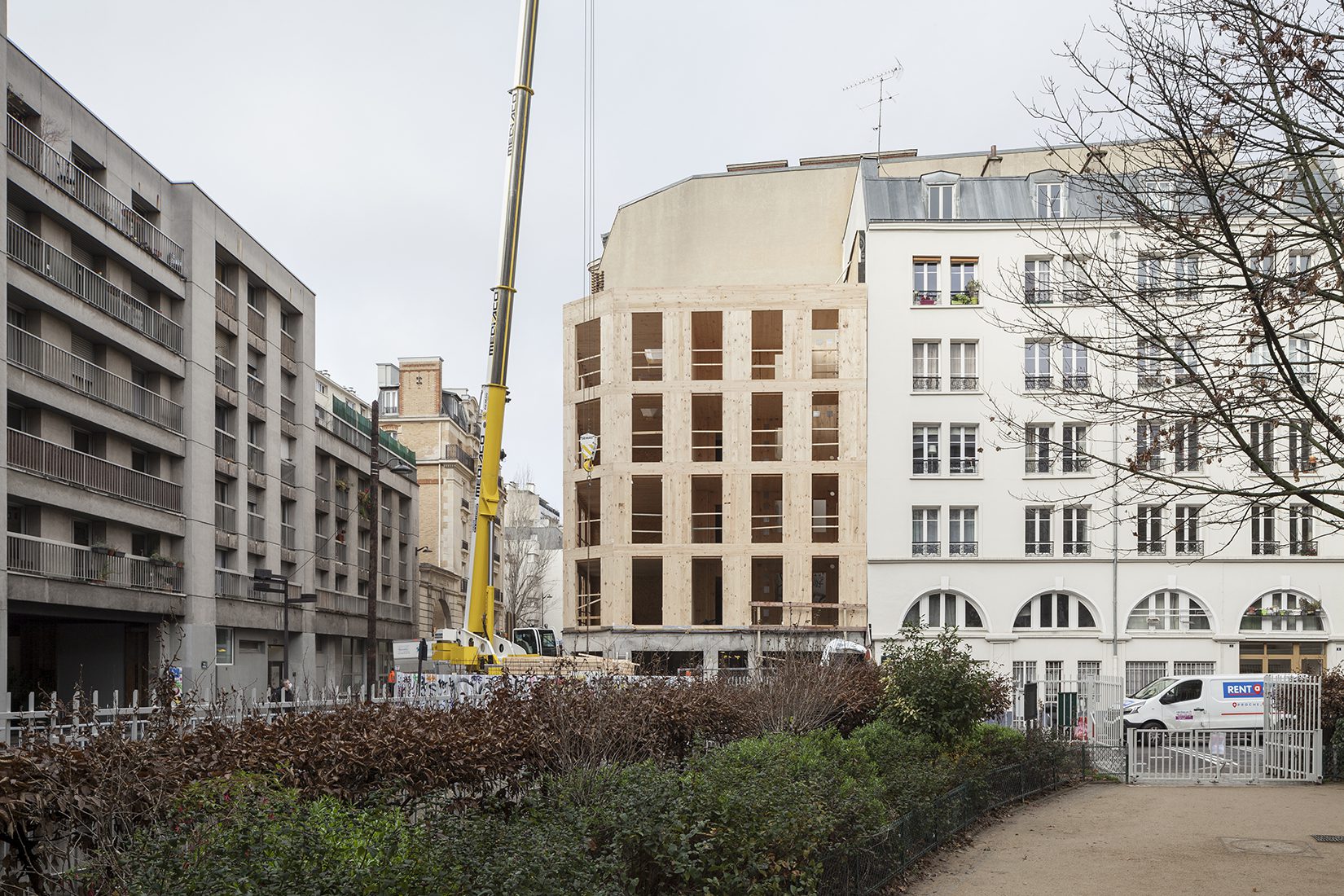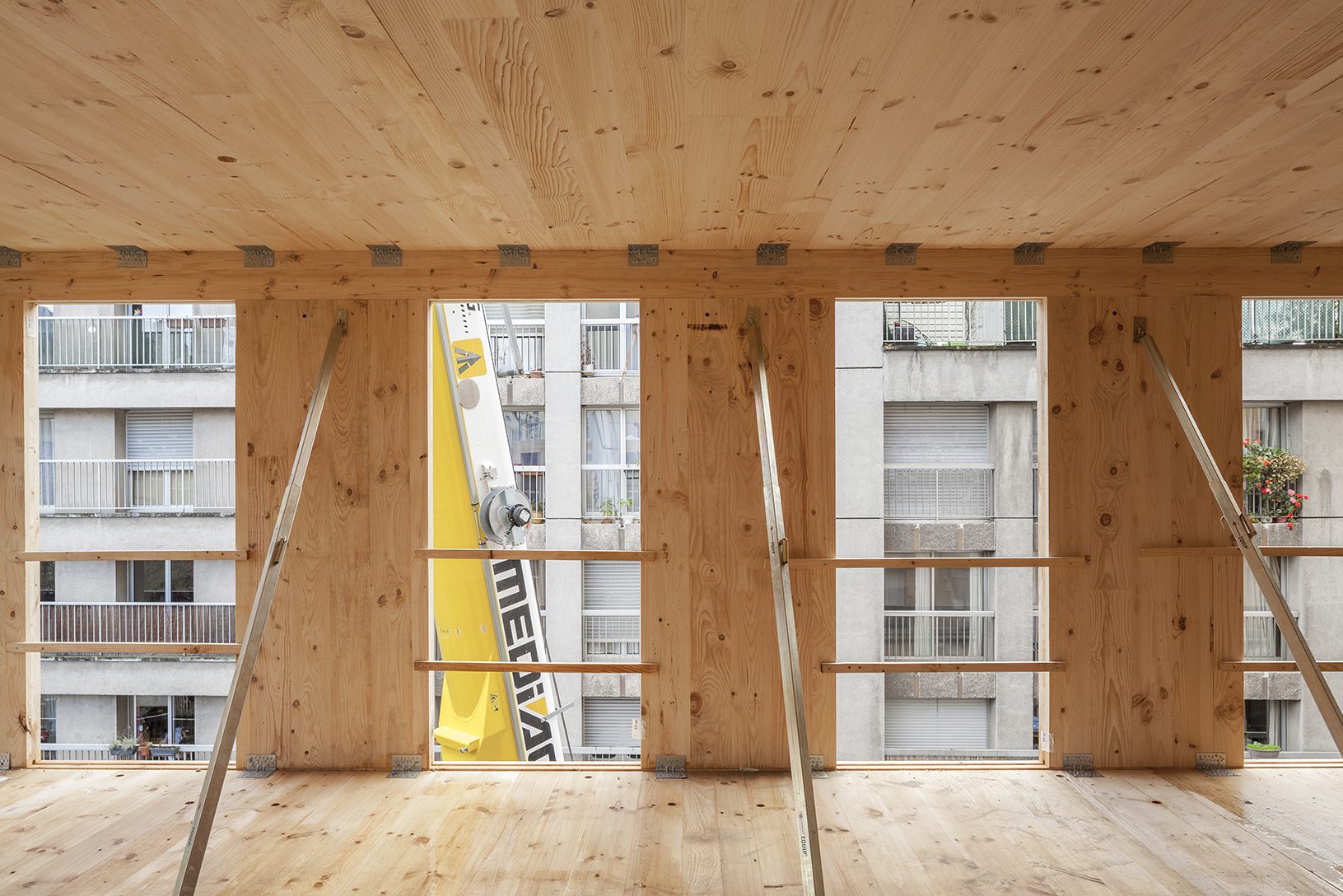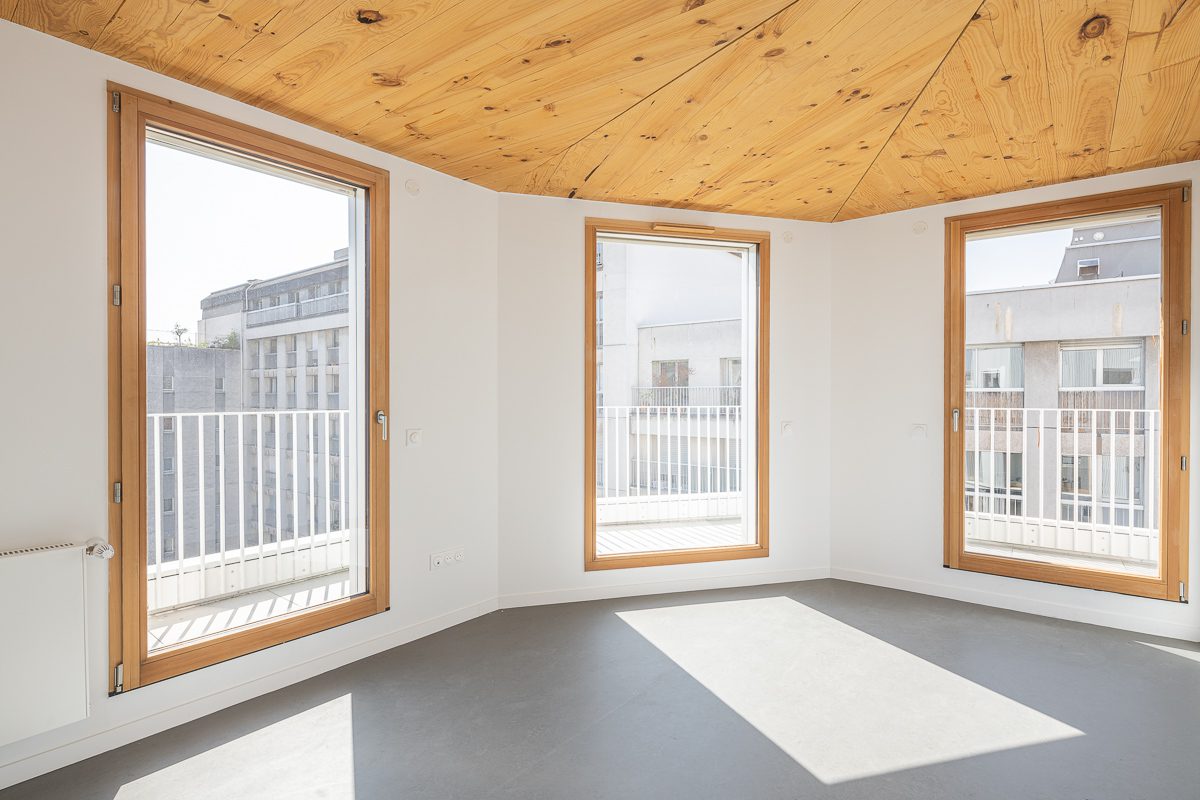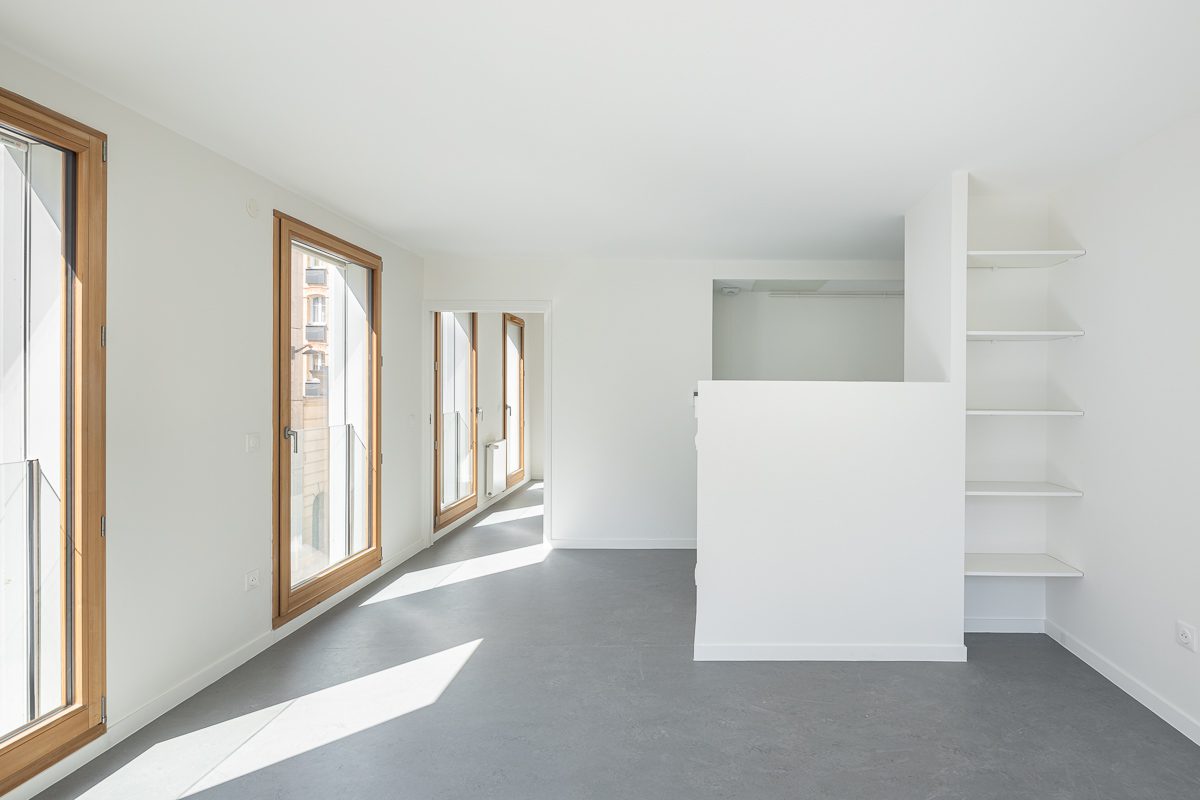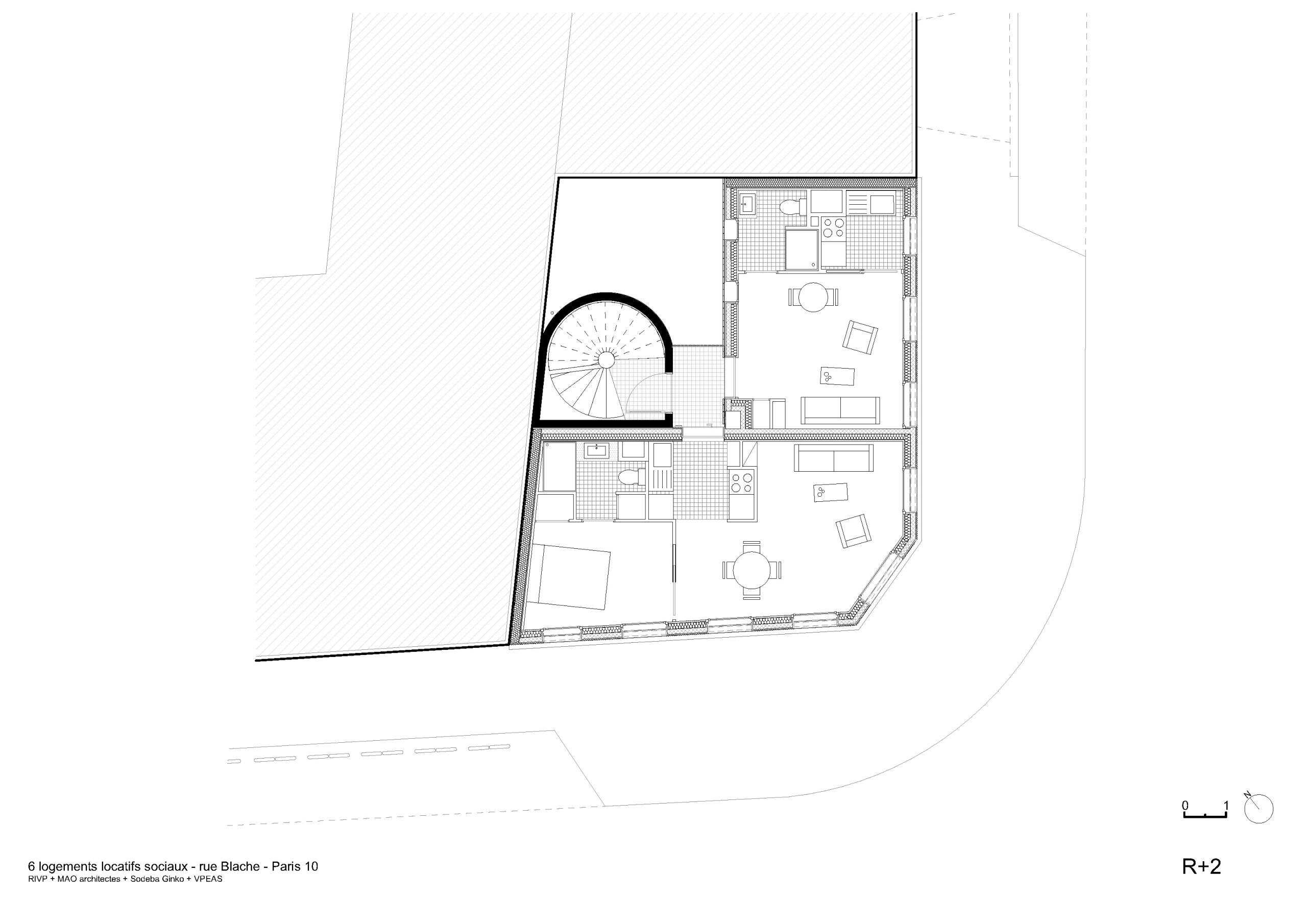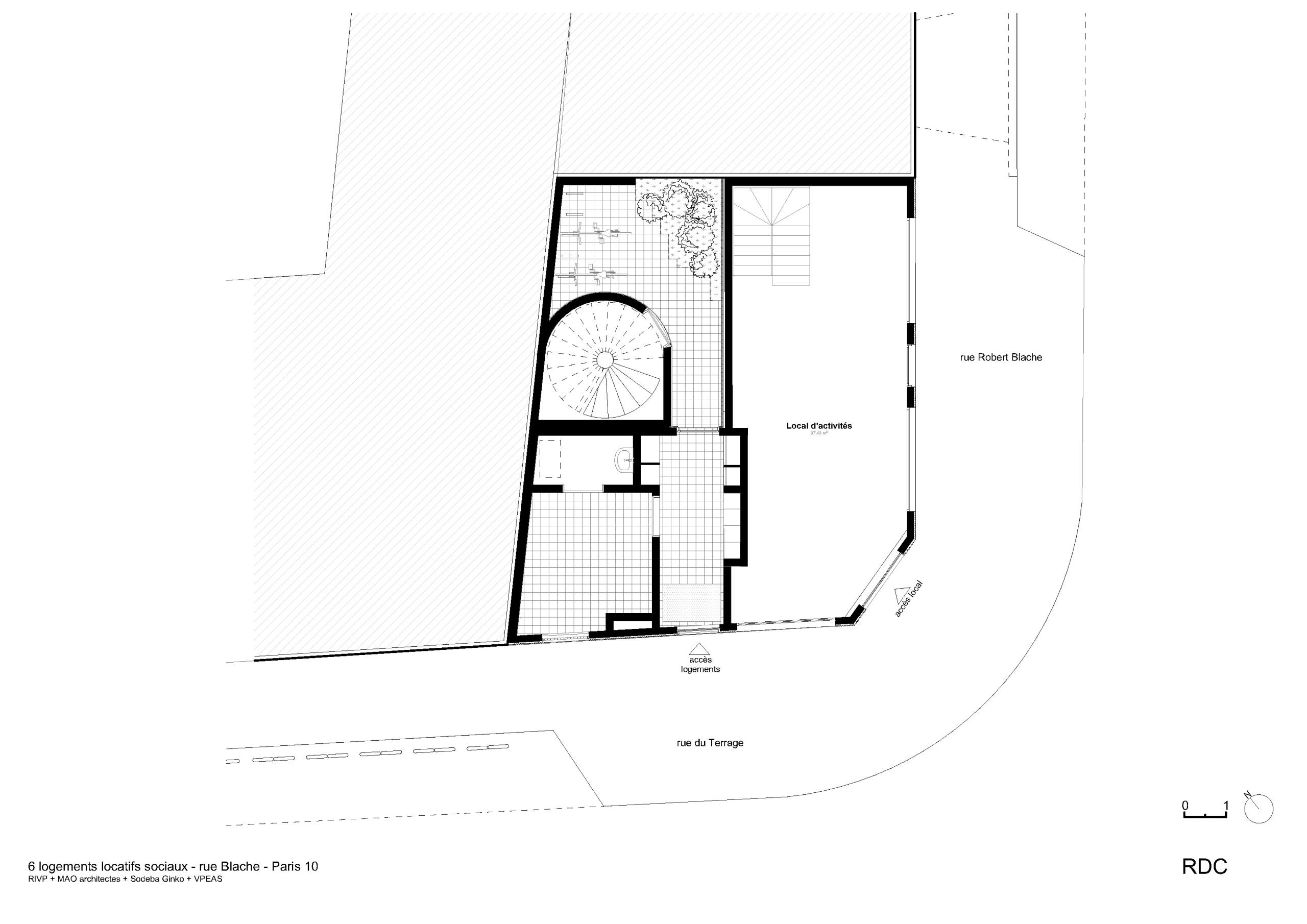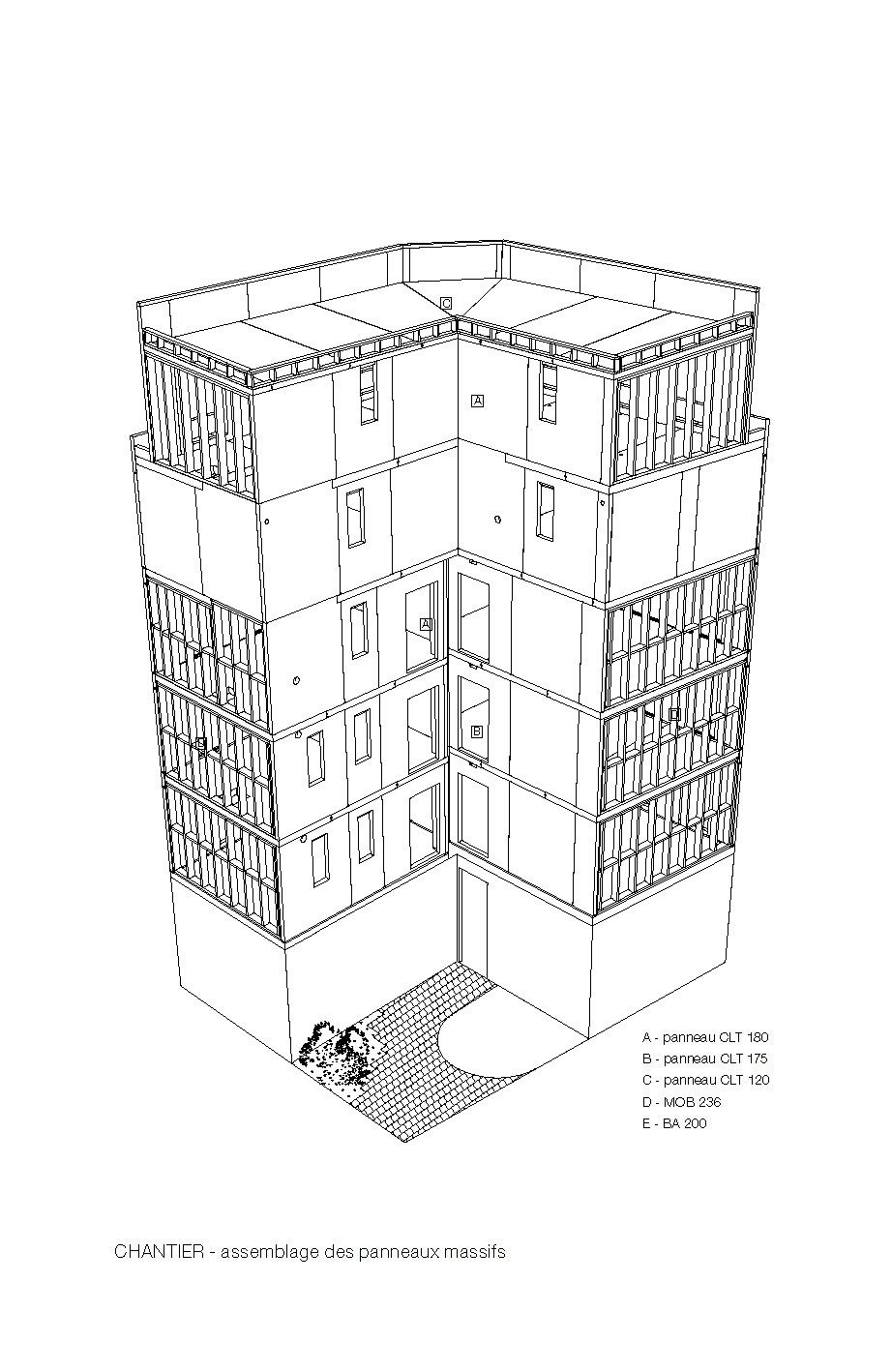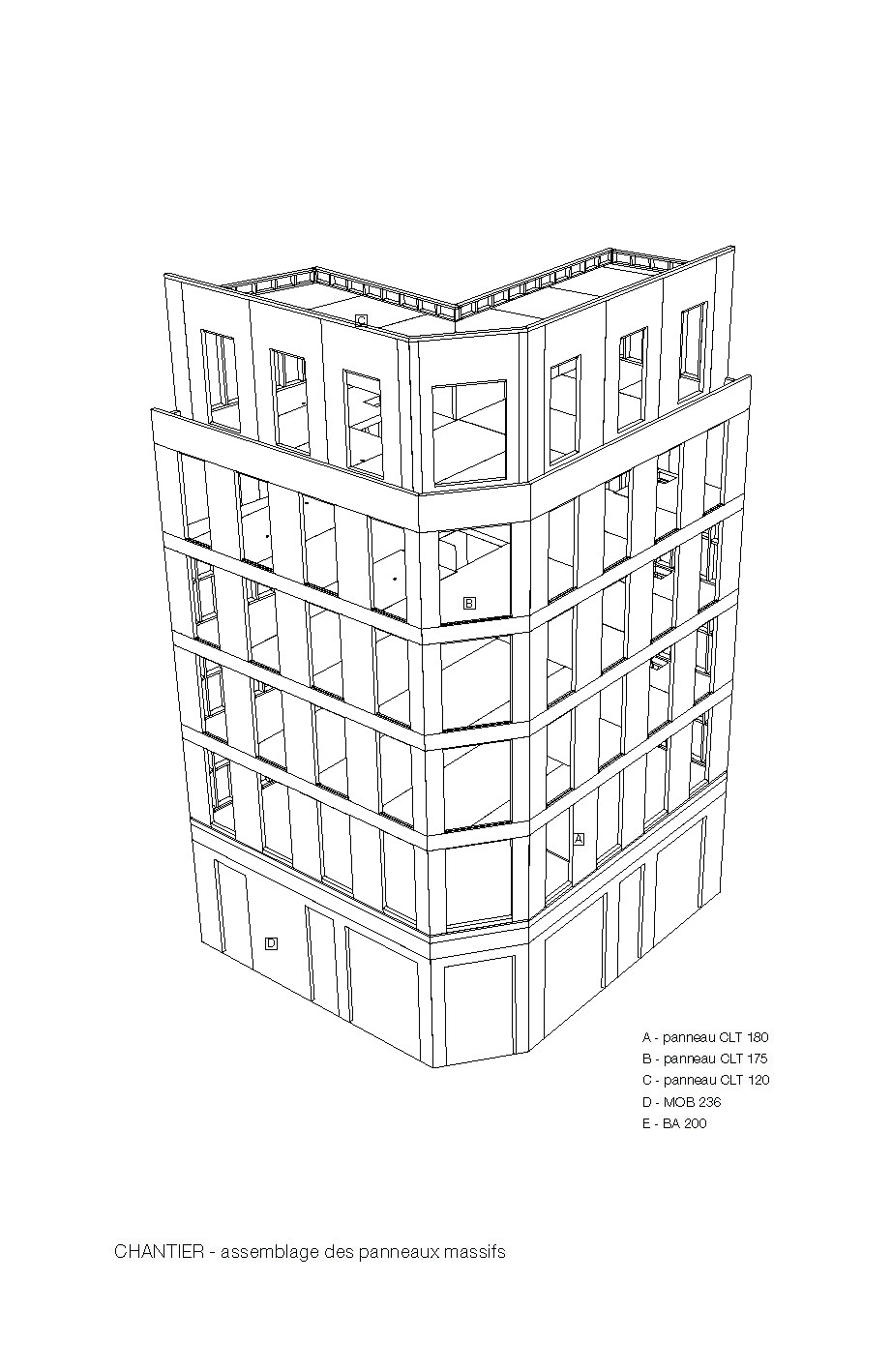Blanche/
Mobile Architectural Office
Project Details

Location(City/Country):
Paris / France
Tipology:
Residential
Year (Design/Construction):
- / 2022
Area (Net/Gross):
263 m2 / -
Operational Carbon emissions (B6) kgCO2e/m2/y:
-
Embodied Carbon emissions (A1-A3) kgCO2e/m2:
-- The use of many timber elements and natural materials helps to reduce embodied carbon.
- The building can be disassembled and reused at end of life .
- Material layers are reduced and surfaces are exposed to reduce embodied carbon.
Mobile Architectural Office, has recently delivered a wooden structure building (6 housing units), in the centre of Paris, on behalf of the RIVP. The site is located at the intersection of three characteristic Parisian urban landmarks not far from the Canal Saint-Martin: Rue Robert Blache, punctuated by small white rendered faubourien buildings with discreet modenature, Rue du Terrage, largely occupied by a large HBM type complex with neat brick facades and the operation around Place Raoul Follereau, an imposing housing complex, built in the early 1980s and marked by a reinterpretation of classical language, which can be described as postmodern.
The building is located at the corner of rue Robert Blache and rue du Terrage. The agency wished to reinterpret the codes of faubourienne architecture present at rue Robert Blache: a compact volumetry between the courtyard and the street, a façade ordered by regular vertical openings, a discreet modenature, simple expression of the building’s construction choices. On the ground floor on rue Robert Blache, the architects have created a strong sense of animation by maximising retail space. Access to the flats is via a bright, walk-through hall overlooking Rue du Terrage. On the upper floors, all the dwellings are double or triple oriented and have large windows offering a maximum of light to the inhabitants. On the street side, the building has a matt white ribbed metal skin. The joinery is made of wood in natural colours and the railings are made of glass, offering luminosity and privacy to the flats. On the courtyard side, the facade is clad in natural-coloured wood cladding.
The building develops a structural principle based on prefabricated wood, with solid facades and floors (from the Basque Country). This principle has allowed the development of a very low carbon project and the assembly of the structure on 5 levels in 10 days. Cross-laminated timber panels placed on the facades and partitions support cross-laminated timber panel floors. The structure can be seen inside the dwellings with some structural elements visible. The insulation of the whole building is provided by wood fibre boards. The floor is made of vegetal fibres (linoleum) or tiles (common corridors and wet rooms). In order to facilitate the large spans in the commercial premise and the relationship with the ground, the structure of the ground floor is made of concrete. A low-load project The programme develops 6 dwellings including two triplexes on the ground floor . This configuration has made it possible to serve the 5-storey building only by means of a staircase and external landings, thus limiting the costs of a possible lift. All of the technical equipment is managed by dwelling (ventilation and individual boilers) in an envelope with very high thermal resistance. Rainwater is collected on the roof and feeds the planter above the bicycle room and the green space on the ground floor. A recovery system in the tank supplies the taps in the common areas (maintenance, watering) and all the sanitary facilities.
- Photographer: Cyrille Lallement
